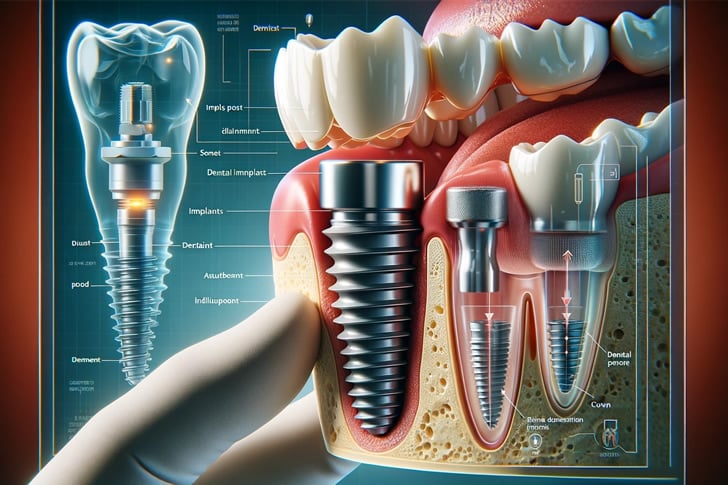Dental Implant Options: A Guide for Seniors
As we age, our dental health becomes increasingly vital, impacting everything from nutrition to overall wellbeing. For seniors facing tooth loss, dental implants offer a durable and functional solution, potentially enhancing life quality. This comprehensive guide explores the various dental implant options available, helping seniors make informed decisions about this important aspect of their dental health.

Dental Implant Basics
Dental implants are surgically implanted devices that replace the roots of missing teeth. They are typically made from titanium, a material well-tolerated by the human body, which allows these implants to integrate with the bone, a process known as osseointegration. This strong foundation allows implants to support crowns, bridges, or dentures, effectively restoring functionality and aesthetics.
According to the American Academy of Implant Dentistry (AAID), over 3 million Americans have received dental implants, and that number grows by approximately 500,000 annually. Implants boast a success rate of about 98%, making them a highly reliable option for tooth replacement.
Types of Dental Implants
There are primarily two types of dental implants: endosteal and subperiosteal. Endosteal implants, which are placed directly into the jawbone, are the most common kind. They require a healthy jawbone for the implantation and subsequent osseointegration. Subperiosteal implants, on the other hand, are placed under the gum but above or on the jawbone. These might be a suitable option for seniors who do not have sufficient jawbone and do not wish to undergo a bone augmentation procedure to accommodate endosteal implants.
Considering Dental Implants: Factors for Seniors
There are several factors that seniors should consider when exploring dental implants, including oral health status, medical health, and cost. For successful dental implantation, good oral and overall health are prerequisites. Conditions such as uncontrolled diabetes or diseases affecting bone growth can impair the healing needed for successful implant integration. Therefore, it’s crucial for prospective implant recipients to have a thorough discussion with their dentist about their health history.
Cost is another significant consideration. According to the New York Times, the cost for a single dental implant can range from $3,000 to $4,500, which includes the surgery for placement, the post, and the crown. However, many dental insurance plans do not fully cover the cost of dental implants, considering them a cosmetic procedure. Seniors should check with their insurance providers about what’s included in their coverage or consider the benefits of additional dental insurance plans that offer implant coverage.
Innovations in Dental Implant Technology
Recent advancements in dental technology have made implants more accessible and effective. For instance, 3D printing technology now allows for the precise creation of implants that perfectly fit the individual’s anatomy, reducing discomfort and recovery time. Furthermore, developments in implant surface materials enhance the osseointegration process, improving the long-term success of the implants.
Another innovation is the introduction of mini dental implants (MDIs). These are smaller than traditional implants and can be used in situations where a regular dental implant might not fit. They require less bone structure for placement, which can make them a suitable choice for older adults who have experienced bone loss.
Preparation and Recovery
Preparation for dental implants usually involves a series of dentist visits. This includes an initial consultation, during which the dentist evaluates the viability of dental implants through exams and imaging studies like X-rays or CT scans. If a patient is deemed a suitable candidate, further appointments are scheduled for the teeth implants and the fitting of crowns or dentures.
Recovery time after receiving dental implants can vary. Generally, mild soreness can be treated with over-the-counter pain relievers, and many individuals are able to resume normal activities within a day. Total healing and integration of the implant with the jawbone typically take several months, after which final crowns or dentures are placed.
Choosing the Right Dental Professional
Choosing a qualified and experienced dental professional is crucial for a successful dental implant procedure. Dentists who specialize in implantology or oral surgery, and who are members of the American Academy of Implant Dentistry (AAID) or the American Board of Oral Implantology (ABOI), typically possess the specific skills and knowledge required in the implant procedure.
Lastly, it’s beneficial for seniors to actively engage with their chosen dental professional, discussing all aspects of the procedure, maintenance, and care post-implantation to ensure the best outcomes.
Dental implants represent a significant investment in a senior’s health and quality of life. With the right preparation and care, they can provide comfort, functionality, and confidence for years to come.







Recent Comments